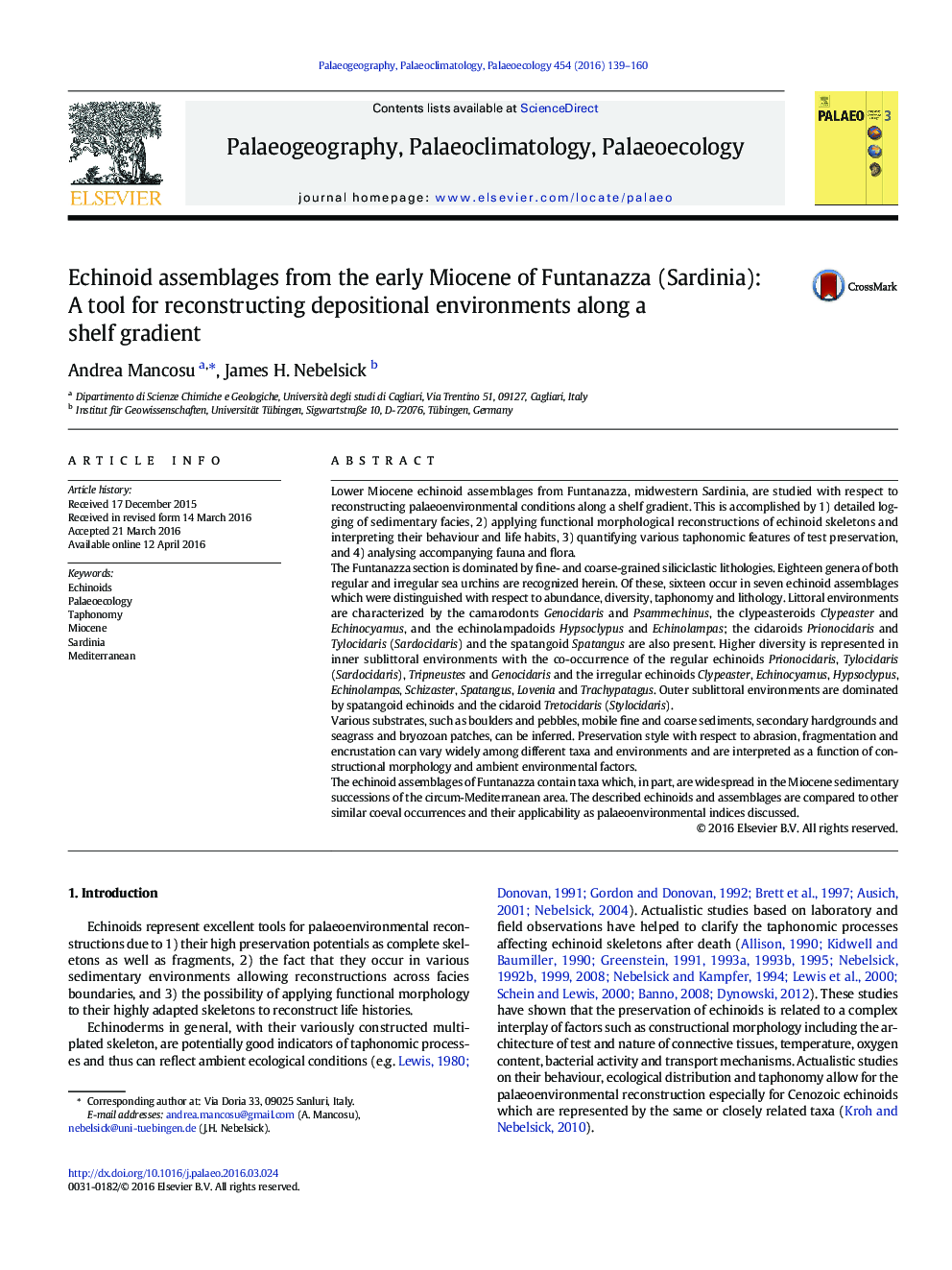| کد مقاله | کد نشریه | سال انتشار | مقاله انگلیسی | نسخه تمام متن |
|---|---|---|---|---|
| 4465604 | 1622137 | 2016 | 22 صفحه PDF | دانلود رایگان |

• In the Miocene of Funtanazza, Sardinia, seven echinoid assemblages are recognized
• Sixteen genera of both regular and irregular sea urchins occur in the assemblages
• The assemblages differ with respect to abundance, diversity, taphonomy and lithology
• The assemblages reflect changing environmental factors along an ecological gradient
• The echinoid assemblages possess a high potential as palaeoenvironmental indices
Lower Miocene echinoid assemblages from Funtanazza, midwestern Sardinia, are studied with respect to reconstructing palaeoenvironmental conditions along a shelf gradient. This is accomplished by 1) detailed logging of sedimentary facies, 2) applying functional morphological reconstructions of echinoid skeletons and interpreting their behaviour and life habits, 3) quantifying various taphonomic features of test preservation, and 4) analysing accompanying fauna and flora.The Funtanazza section is dominated by fine- and coarse-grained siliciclastic lithologies. Eighteen genera of both regular and irregular sea urchins are recognized herein. Of these, sixteen occur in seven echinoid assemblages which were distinguished with respect to abundance, diversity, taphonomy and lithology. Littoral environments are characterized by the camarodonts Genocidaris and Psammechinus, the clypeasteroids Clypeaster and Echinocyamus, and the echinolampadoids Hypsoclypus and Echinolampas; the cidaroids Prionocidaris and Tylocidaris (Sardocidaris) and the spatangoid Spatangus are also present. Higher diversity is represented in inner sublittoral environments with the co-occurrence of the regular echinoids Prionocidaris, Tylocidaris (Sardocidaris), Tripneustes and Genocidaris and the irregular echinoids Clypeaster, Echinocyamus, Hypsoclypus, Echinolampas, Schizaster, Spatangus, Lovenia and Trachypatagus. Outer sublittoral environments are dominated by spatangoid echinoids and the cidaroid Tretocidaris (Stylocidaris).Various substrates, such as boulders and pebbles, mobile fine and coarse sediments, secondary hardgrounds and seagrass and bryozoan patches, can be inferred. Preservation style with respect to abrasion, fragmentation and encrustation can vary widely among different taxa and environments and are interpreted as a function of constructional morphology and ambient environmental factors.The echinoid assemblages of Funtanazza contain taxa which, in part, are widespread in the Miocene sedimentary successions of the circum-Mediterranean area. The described echinoids and assemblages are compared to other similar coeval occurrences and their applicability as palaeoenvironmental indices discussed.
Journal: Palaeogeography, Palaeoclimatology, Palaeoecology - Volume 454, 15 July 2016, Pages 139–160